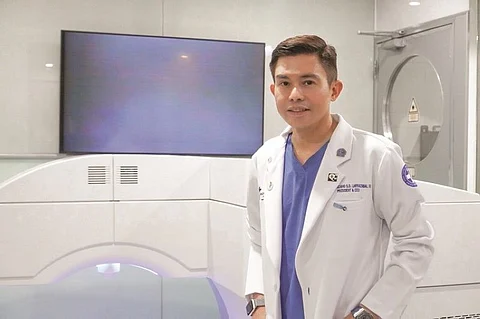

OUR senses help us connect with our environment, most of which we perceive through our sense of sight. While there are eye conditions that don’t come until one is past his 60s, there are also those that can occur at any age, due to an irregularly shaped cornea or the dome-shaped clear tissue in front of the eye. These are nearsightedness, farsightedness and astigmatism and these can be treated with eyeglasses, contact lenses or laser eye surgery.
Before, the most common alternative to glasses and contact lenses was the laser-assisted in situ keratomileusis (Lasik), in which a special type of cutting laser is used to change the cornea, thereby improving one’s vision.
The CebuDoc Group and Larrazabal Eye Group have been at the forefront of vision correction since 2002, specifically in refractive surgery, and have performed the most number of Lasik procedures outside Metro Manila.
The team is led by Dr. Potenciano “Yong” S.D. Larrazabal III, head ophthalmologist and laser eye surgeon, and a diplomate of the Philippine Board of Ophthalmology. He was the first in the entire Visayas and Mindanao to perform femtosecond bladeless Lasik and femtosecond laser-assisted bladeless cataract surgery.
In a constant pursuit to innovate, the CebuDoc Group recently introduced the latest laser eye surgery technology, the small incision lenticule extraction (Smile). A first in VisMin, this minimally invasive procedure is used to correct nearsightedness and astigmatism.
“I went to several countries to observe this procedure, including India where I performed a few surgeries on Indian patients, supervised by Indian ophthalmologists. I found out that the benefits are really tremendous.
Patients can see right away, there’s no downtime, you can shower immediately, you can go to the gym, do sports the next day,” said Larrazabal.
Smile can correct nearsightedness of up to a grade of 1,000, and astigmatism as high as 500 to 600. The patient first has to go through a 1.5-hour screening to determine if he is qualified for Smile and has no other eye conditions such as cataracts and glaucoma.
“So what the laser does, instead of the traditional flap, it creates a lenticule (a small, lens-shaped bit of tissue) within the cornea, with a pocket incision of only two millimeters. This takes just 30 seconds. Then through the incision, I remove the lenticule within the cornea--this is the most complicated part of the procedure. Once it’s removed, the incision closes right away so the patient is healed in a matter of minutes. And since you don’t create a flap, you don’t disturb the nerve innervations of the cornea, so there’s less chances of dryness or corneal complications after the procedure,” explained Larrazabal.
The procedure has been patented by Zeiss, a world leader in optical systems and optoelectronics. Zeiss machines, each costing almost $2 million, are the only ones that can perform Smile at present. Patients are advised to have the screening a day before the procedure, which is usually done every Wednesday at the Centre for Sight.